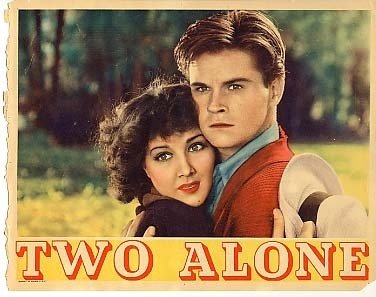
Undead Signifier
A friend of mine once said: “Please stop invoking Hitler as a point of comparison — he’s what Roland Barthes would have called an exhausted signifier.” Good line, that.
And yet, clichéd arguments linking Nazis to Zionists have the lamentable advantage of being true. Back when Fb was still popular, I watched a viral video of Israeli soldiers using attack dogs against some 16-year-old boy, another Palestinian child in prison for “throwing stones” (the standard charge). As IDF goons held and taunted their victim, they joined dubious company. Barthes and all the good taste on earth couldn’t stifle public discussion. Or make anecdotes and hard facts about Holocaust(s) past and present disappear.
Close to a decade ago, according to my own strictly amateur research, Haaretz reported that (brace yourself) 99.74% of all legal cases brought against Palestinians ended in conviction. We heard one dodge after another defending The Hollow Land, with dozens of laws diminishing historical Palestine’s native population, even within the old borders. Why deny it? Apologias, passive or otherwise, lie in the domain of scoundrels, lunatics and moral imbeciles. Here, I’m speaking to those Brand-Loyal Democrats who spent decades falsely equating Israel’s ethno-state with democracy, willing collaborationists in what Francesca Albanese now calls “a genocide foretold.”

Phantom Silent Joan
Joan Crawford, the epitome of classic Hollywood movie stardom, made a total of seventy-nine features, give or take, in prominent roles, and fifty-six of those features were made for MGM from 1925 to 1943. Twenty-two of them were silent films. Of those silents, three of them are absolutely or officially lost unless someone finds them in an attic somewhere. These lost ones are Rose-Marie (1928), a silent version of the operetta, Dream of Love (1928) where she played a gypsy (and which was a botch according to its reviews), and The Duke Steps Out (1929), which starred her friend William Haines, and about which she said, “This picture was created strictly for him. I might as well have stayed home.” But of the others that do not circulate or get shown on TV at all, which might still be around and which are gone for good? And which ones might tell us something more about her?

End of an Era: Pro-Palestine Language Exposes Israel, Zionism
If one were to argue that a top Spanish government official would someday declare that “from the river to the sea, Palestine would be free”, the suggestion itself would have seemed ludicrous.
But this is precisely how Yolanda Diaz, Spain's Deputy Prime Minister, concluded a statement on May 23, a few days before Spain officially recognized Palestine as a state.
The Spanish recognition of Palestine, along with the Norwegian and Irish recognition, is most important.
Western Europe is finally catching up with the rest of the world regarding the significance of a strong international position in support of the Palestinian people and in rejection of Israel’s genocidal practices in occupied Palestine.
But equally important is the changing political discourse regarding both Palestine and Israel in Europe and all over the world.

Scream of the Aeoliphone
Captain Applejack must have been a really awful play: the 1931 film seems to preserve it faithfully. But it adds discomfiting qualities all its own. The old dark house farce-thriller is rendered with a few creative camera angles to disrupt the general staginess by Hobart Henley, a rather interesting director who made numerous silents and a few almost-good pre-codes: his Night World (1932) is actually quite fine.

Eleanor Powell
One of her movie vehicles was called Born to Dance (1936), and if ever anyone was, surely it was Eleanor Powell, the queen of tap. Fred Astaire said that Powell laid down taps “like a man,” and that’s a clue to both her appeal and also her limitations. Powell made only 14 features, nine of them as a star or headliner, from 1930-1950. She did a lot of numbers in men’s suits, her eyes rolling with what seemed like pleasure and her mouth as wide open as possible in a smile, even when she was coming out of a series of turns that might have made Ann Miller feel like she needed to sit down. She would often do backbends, splits and acrobatic work in between her taps, all with that toothy grin on her face.
“I would rather dance than eat!” Powell said in a rare late interview. She claimed that she was so shy as a child that her mother sent her to dance school as a way to get over it. Powell looked down on tap at first, but then she was taught by Jack Donahue, who had partnered Marilyn Miller, and his technique intrigued her and defined her own later style. “He had a belt from the war-surplus store and he took two sandbags—the kind they use in theaters for curtains—and he put one on each side of the belt, which he fastened around my waist,” Powell said. “Honey, I was riveted to the ground. That’s why I dance so close to the ground. I just couldn’t move. That’s why I can tap without raising my foot even, because I was taught with this belt and these weights on me.” Her shapely legs seemed stuck to the floor always, and this gave her an extraordinary sense of balance; there was no way she was ever going to shift her weight or be in danger of falling over. She had a physical rootedness that was very similar, sometimes, to Gene Kelly’s own close-to-the-ground, masculine dancing.

The Curse of the Great Title
It’s an old Hollywood truism that if you have a good title, the quality of a film doesn’t necessarily matter—people will still buy tickets based on that title alone. This was especially true of B films, whose brief theatrical runs didn’t leave a lot of time for even a great film to generate much word of mouth. Roger Corman took the idea a step further, finding that he could sell a film to theaters based on a title alone, before a single frame had been shot and in some cases even before a script had been written.
The rule holds just as true for serious dramas as it does for science fiction and horror films. Adult audiences may be harder to please than teenagers heading for the drive-in, but they’re just as gullible. You generate interest and curiosity, you make some promises and raise expectations with a title, even if audiences ultimately leave disappointed you still have their money.

“Two Alone”: A Noir Pastoral
It gets darker in the country than in the city.
Urban areas are thought to teem with crime and vice, but for city dwellers used to crowded, well-lit streets there’s a special terror about lonely rural roads at night. To the wary urbanite, the country—while it may be pretty for a Sunday outing—is a place of isolation, ignorance, backwardness and intolerance. This distrust feeds a strain of the rural gothic that trickles through Hollywood movies, always marginal and often subversive. Less common than the swampy, overripe Southern gothic, this genre of bucolic noir portrays farm life as mean, hard-bitten, joyless, and rife with exploitation—less salt-of-the-earth than salt-in-the-wounds.
F.W. Murnau’s City Girl (1929) set the template. Here Murnau inverted the pattern of Sunrise (1928), in which George O’Brien’s restless farmer is corrupted by an immoral city vixen and redeemed by a his wholesome, pure-hearted peasant wife. In City Girl, the eponymous heroine spends her days slinging hash in a Chicago lunch counter, sweating and footsore, batting away passes from endless hordes of male customers. At night she goes home to the roar of the El outside her cramped little room, blows the dust off her pitiful potted flower, listens to the chirping of a mechanical bird toy, and dreams of a better life outside the city. But when she marries a naive farm boy and goes home with him to the wheat fields, she’s briskly disillusioned. She has to contend with her harshly disapproving, bible-thumping father-in-law, who dominates her spineless husband; with a crowd of lecherous hired hands whose leering and pawing are worse than anything at the lunch counter; with thankless toil and her in-laws’ grim obsession with profit.
City Girl was caught in the changeover to sound, made as a silent but released in a mangled form with added musical and dialogue scenes. (The silent version has since been recovered and is now the only version available.) Among the changes that came with the adoption of sound was an intense urbanization of Hollywood’s output. The difficulty of location shooting and the influx of actors and writers from New York may have been the causes, but the whole tone of pre-Code movies is urban: wised-up, fast-paced, slangy.

Which Side Are You On? — Florence Reese v. Hitler and the Nazis
From 20th century exemplars of Evil to capital "K" Kitsch: Hitler and the Nazis have been tragically transformed by the loudest stewards of Holocaust Memory. Zionists are live-streaming, even burlesquing, their own genocide against premature Palestinian infants in their incubators. Beset refugees, barely sheltered, are being incinerated well within Israel's designated "safe zones." The genocidal attitude of the Netanyahu regime is that Gaza itself is a terrorist organization.
Add lurid social psychology to the general mayhem: for, less than 2% of Israelis, supposed keepers of the “Never Again” flame, believe that excessive force is being used against Gaza’s civilian population. And of course Joe Biden’s endless prevaricating legal cover for the IDF facilitates its continuous blasting of humanitarian aid convoys. Now, nobody’s asking me, but such an absolute gutting of the Holocaust's ethical substance imperils Jewish safety — well, everywhere. Anti-Semitism is on the rise, in large measure thanks to Israel's incessant message that it stands in for Jewishness per se.
Translation: "Every time we massacre children, we are affirming mainstream Jewish values." I realize that it's unfair to expect a group like Jewish Voice for Peace to correct that lie. And yet, JVP has courageously stood against the… Democratic Party Faithful...?
A whopping 87% of the same Biden constituents who think he's doing "a good job” generally also approve of his arming Israel, the world’s fourth most powerful military, against a starved ethnic group. That particular instance of public approval reveals Ride-or-Die Democrats for the bonafide psychos and moral imbeciles they are. Alas, always and everywhere, Dems will see in themselves the sole bulwark against that hackneyed Greater Evil, currently embodied by Donald Trump's presence in the election. Alright then, let’s sweep aside the Dems' capacity for engaging in banana republic schemes to imprison/banish Mr. Trump from the electoral arena. Instead, we must return to the Crime of all Crimes and remind ourselves that Democrats vote for genocide, while maintaining their ideological certainty... "We are Lesser Evil-ism at its finest." As Israel systematically starves Gaza's million or so little ones, the American President starves ours by doubling, yes DOUBLING, child poverty in one year; and, speaking of Youth, Biden looks upon anti-genocide protests with disdain, blithely labeling student protesters —
“Anti-Semitic.”
This weaponized language is itself a form of anti-Semitic politics, hurting Jewish life in too many ways to catalogue. Israel’s settler colonial violence and U.S. Imperium are knotted and gnarled, apparently impossible to separate. Why else would free speech be so triggering to academic administrators across the nation? Twitchy, undemocratic responses at Columbia and other strife-torn universities — a twisted combination of police crackdowns and campus shutdowns — seem wildly disproportionate even on this occasion. Students and teachers suspended and arrested for attempting to disrupt support for Israel’s colossal outrages against Gaza — the question obtains, just how illegal is the speech our scholars are using?

Neg Sparkle #8
“Neg sparkle" is a kind of film damage manifesting as twinkling constellations on the image. This column is about a different kind of film damage, the mental havoc wrought by overindulgence in cinema, though I hold out the possibility that a human being so afflicted may be in some ways better than the normal kind.
“I’m just a storyteller, and the cinema happens to be my medium. I like it because it recreates life in movement, enlarges it, enhances it, distills it. For me, it’s far closer to the miraculous creation of life than, say, a painting or music or even literature. It’s not just an art form; it’s actually a new form of life, with its own rhythms, cadences, perspectives and transparencies. It’s my way of telling a story.” Federico Fellini.
“I’m a big fat liar.” Also Federico Fellini.
The late Buck Henry credited Fellini, in interviews, with spouting “all sorts of lies and nonsense that he can’t possibly believe,” but it might be amusing to take him at his word. Is cinema a new form of life? It might explain much.

The Earth Will Be Destroyed!
Destruction on a massive scale, death, and human misery have always made for slam-bang entertainment, and because of this disaster films have been a reliable cinematic standby since the silent era. From 1913’s The Last Days of Pompeii (which has been remade roughly every 20 years since then), audiences have flocked to films about floods, earthquakes, fires, plagues, volcanoes, sinking ships, nuclear mishaps, plane crashes — anything, really, in which hundreds, or better yet thousands, of people find themselves in simultaneously grave peril. While earnest filmmakers might like to believe the genre’s popularity lay in its depiction of the ultimate triumph of the human spirit when confronted with impossible odds, I’m more inclined to think they bring in money because we’re just a bunch of bloodthirsty dogs who like to see buildings crumble.
Be that as it may, since the 1970s, one particular disaster film subgenre has proven more popular than any other. At least its spawned more films. For some reason we seem particularly fascinated with the dread possibility of a massive asteroid striking the Earth. But in a way it makes sense, as it would essentially involve all those disaster films we’ve seen before rolled into one, but with an added bonus. Instead of a single city, a single country, and a mere few thousand people being threatened, a massive asteroid could very well mean the extinction of all life on the planet. And what’s more exciting than that?
This is why we’ve seen A Fire in the Sky, Meteor, Asteroid, The Green Slime, Deep Impact, Armageddon, and well over a dozen other features and made-for-TV films in recent years.
The problem with these pictures is that they’re all exactly the same. The big name stars (from Sean Connery, Natalie Wood, Richard Crenna and Anthony Zerbe to Bruce Willis and Morgan Freeman) may change, but the plotlines are nearly identical: an asteroid is discovered on a collision course with earth. It’s kept a secret to avoid panic. With only a few days left the dire news is announced and an impossible evacuation begins as global mayhem spreads. An effort is made to destroy the asteroid but fails. Another more successful attempt is made but part of the asteroid still destroys a major American city. The stars survive and vow to rebuild as the closing credits begin to roll. The inevitability of this model can be blamed on two films from the 1950s, When Worlds Collide and The Day the Sky Exploded. Together they set out the rules that would govern all subsequent asteroid pictures, with only a few minor variations.

The Invisible Man Japan
Tomei Ningen (The Invisible Man, 1954) is a Japanese invisible man movie, made by Godzilla’s studio, Toho, the same year the mighty lizard stomped his first toytown Tokyo. I guess they were throwing whatever they could at the wall: the fire-breathing dinosaur stuck, the see-through guy bounced off. An earlier attempt to easternize H.G. Wells’ concept, The Invisible Man Appears (ha-ha!) in 1949, came from Daiei, and the only element in common, save for the titular gimmick, is the involvement of Eiji Tsuburaya as effects artist. This inventive fellow, who had been blacklisted for his work in wartime propaganda films (his miniature war scenes were so convincing, it is said, that the Americans recycled them as documentary footage), started his own effects company and was perhaps the major force in the explosion of Japanese fantasy films in the fifties, and he became one of the fathers of Gojira.

Chiseler Radio: PANIC IN THE YEAR ZERO!
The second edition of Panic in Year Zero! is entitled
Single Integrated Operational Plan
The Content is …

